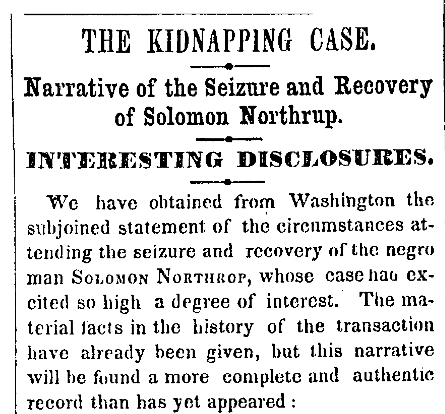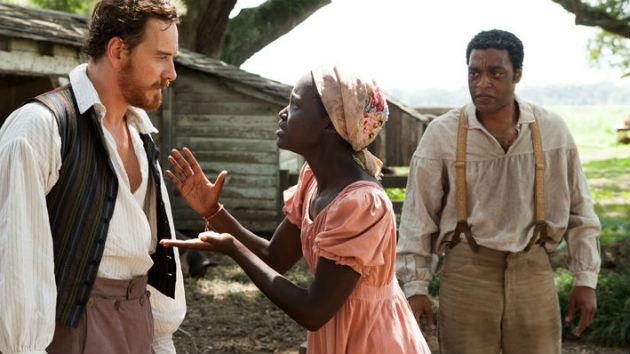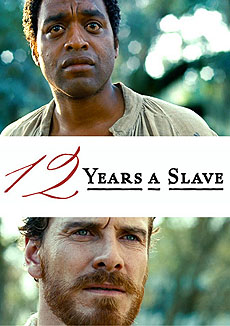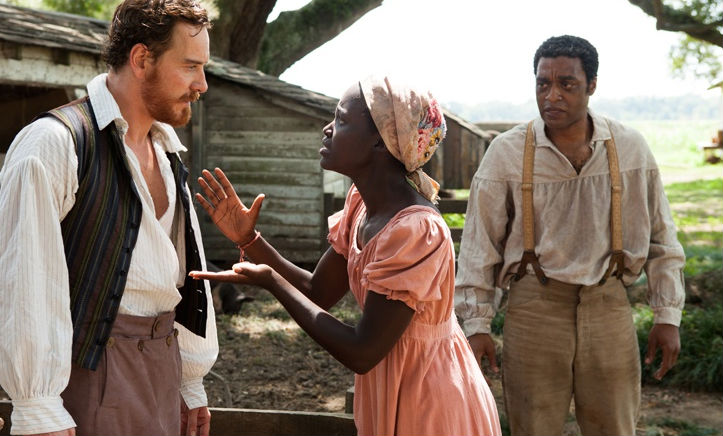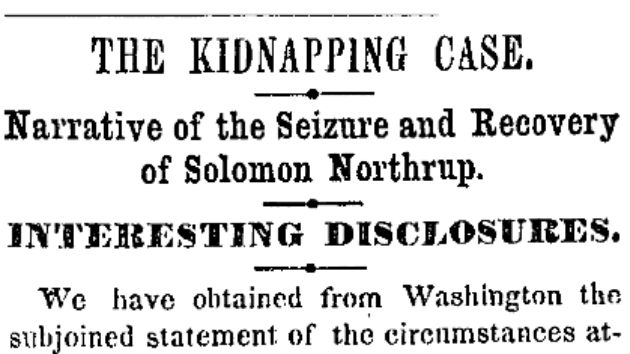
<a href="http://query.nytimes.com/mem/archive-free/pdf?res=9E03EEDC1438E334BC4851DFB7668388649FDE&smid=fb-nytimes">nytimes.com</a>
On Sunday, 12 Years a Slave won the Academy Award for Best Picture. The film tells the true story of Solomon Northup (played by Chiwetel Ejiofor), a free black man who was drugged and kidnapped in Washington, DC, in 1841 and sold into slavery. Northup, a violinist and family man based in Saratoga Springs, New York, was forced to work on Louisiana plantations for 12 years.
On January 20, 1853 (the same year Northup’s memoir Twelve Years a Slave was published), the New York Times ran a report on Northup titled, “The Kidnapping Case,” promising “interesting disclosures” (it spells his name “Northrup”):
“By the laws of Louisiana no man can be punished there for having sold Solomon into slavery wrongfully, because more than two years had elapsed since he was sold; and no recovery can be had for his services, because he was bought without the knowledge that he was a free citizen,” the story reads.
During his acceptance speech, 12 Years a Slave director Steve McQueen dedicated the award to the tens of millions of people still in slavery today.
(h/t the New York Times’ Facebook page.)
